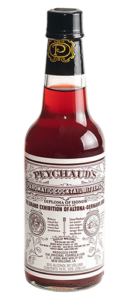The Sazerac cocktail, an iconic American libation with its roots deep in the heart of New Orleans, is not just a drink; it’s a sip of history. This timeless classic has a fascinating journey, with its origins dating back to the 19th century, making it a symbol of American cocktail culture.
The tale of the Sazerac begins in the early 1800s when Antoine Peychaud, a Creole apothecary, operated a pharmacy in the lively French Quarter of New Orleans. Peychaud’s claim to fame was his creation of a medicinal elixir featuring brandy and a unique blend of botanicals. This concoction, referred to as “Peychaud’s Bitters,” was served in an elegant coquetier, a small egg-shaped cup, and was offered as a remedy for various ailments.

In the 1830s, the Sazerac Coffee House, an esteemed establishment in New Orleans, introduced a drink that combined Sazerac de Forge et Fils cognac, water, sugar, and Peychaud’s Bitters. This cocktail was eventually named the Sazerac, taking its name from the cognac brand used in the original recipe. It quickly captured the hearts of locals and became a beloved New Orleans institution. Come the mid-19th century, we saw it mark a significant turning point in the Sazerac cocktail’s history.
The phylloxera epidemic devastated French vineyards, leading to a severe shortage of cognac. As a result, rye whiskey was substituted for cognac in the Sazerac, not only allowing the cocktail to survive but also imparting an unmistakably American twist to the drink. The Sazerac had evolved, embodying the spirit of a changing nation. Around the same period, a New Orleans bartender named Leon Lamothe introduced a local anise-flavored substitute for absinthe known as Herbsaint in the Sazerac cocktail. This clever innovation became a permanent element of the Sazerac’s identity, replacing absinthe due to its prohibition in the United States.
In the latter half of the 19th and early 20th centuries, the Sazerac cocktail began to enjoy its heyday, becoming an emblem of New Orleans’ cocktail culture. However, like many classic cocktails, it experienced a decline in the mid-20th century as more straightforward, mass-produced drinks took the spotlight. But the Sazerac was not destined to be forgotten. The resurgence of the craft cocktail movement in the late 20th century breathed new life into this classic libation.

The Sazerac also plays a vital role in preserving the heritage of New Orleans’ cocktail culture. Historic bars like the Sazerac Bar in The Roosevelt Hotel serve as living reminders of the enduring legacy of this cocktail. Visitors and locals can savor the Sazerac in an ambiance steeped in history, further solidifying its place in the city’s cultural tapestry.
Today, the Sazerac cocktail stands as a revered icon in the world of mixology. It is celebrated as a classic cocktail that encapsulates the essence of New Orleans and American cocktail history. The unique combination of rye whiskey, Peychaud’s Bitters, sugar, and Herbsaint creates a complex and flavorful concoction that continues to be cherished by cocktail connoisseurs worldwide.
The official recipe for the Sazerac cocktail, as we know it today, was established in the 1870s. It involves rinsing a glass with Herbsaint or absinthe, mixing rye whiskey with sugar and Peychaud’s Bitters separately, and pouring the mixture into the rinsed glass.
The Sazerac cocktail is more than a drink; it’s a journey through time, a testament to the resilience of a classic recipe, and a symbol of American cocktail culture, with a storied history, from Antoine Peychaud’s bitters to the transition to rye whiskey and the addition of Herbsaint Absinthe. Its continued popularity and place at the heart of New Orleans’ cocktail culture demonstrate the legacy of this iconic libation. The Sazerac will undoubtedly remain a hallmark of mixology, reminding us of the rich history and traditions that have shaped the world of cocktails. Whether sipped in a classic bar or enjoyed at home, the Sazerac cocktail will always be a taste of history in a glass.







